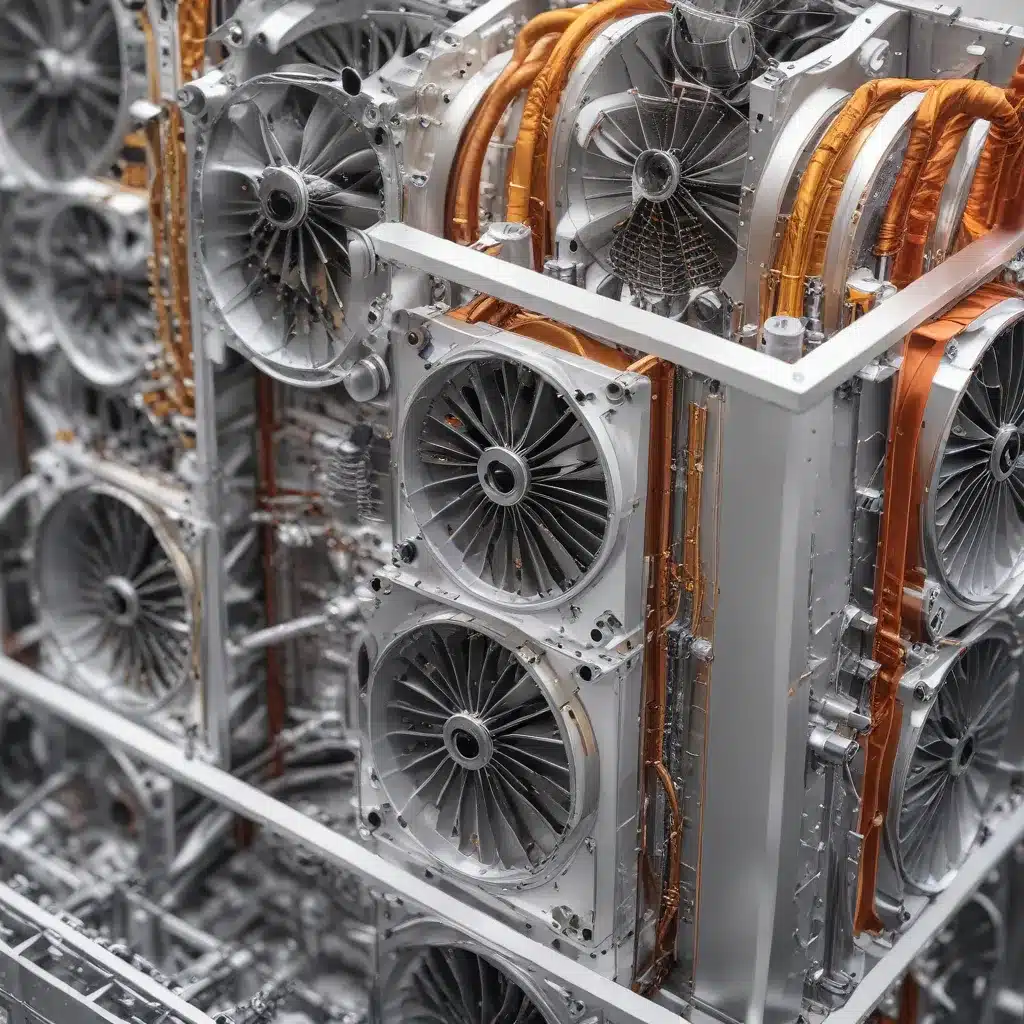
Revolutionizing Heat Exchanger Performance through Computational Creativity
In the realm of thermal engineering, air-cooled heat exchangers have long been a crucial component in a wide array of industrial applications, from power generation to HVAC systems. As technological advancements continue to push the boundaries of efficiency and performance, engineers are turning to innovative design methods to extract every last drop of thermal management potential. One such approach that has captured the attention of the industry is generative design – an iterative process that leverages the power of modern computing to create optimized designs tailored to specific performance requirements.
Unleashing the Potential of Generative Design
Generative design is an evolutionary design process that empowers engineers to explore a vast design space, uncovering innovative solutions that may have been previously overlooked. By combining advanced computational algorithms, numerical simulations, and optimization techniques, this approach can generate a diverse array of air-cooled heat exchanger designs that outperform traditional methods.
The key to the success of generative design lies in its ability to transcend the limitations of human intuition and experience. Traditional heat exchanger design often relies on established geometries and configurations, constrained by our preconceived notions of what works best. Generative design, on the other hand, is not bound by these preconceptions, allowing it to explore uncharted design territories and uncover optimal solutions that may defy conventional wisdom.
Bioinspired Designs for Enhanced Thermal Performance
One of the most fascinating aspects of generative design is its ability to draw inspiration from nature, emulating the intricate and efficient structures found in the natural world. Researchers have long observed the exceptional thermal performance of branching and finned structures in biological systems, such as tree leaves and insect wings. By incorporating these bioinspired principles into the generative design process, engineers can unlock a new realm of air-cooled heat exchanger designs that surpass the capabilities of their traditionally engineered counterparts.
The “space colonization” algorithm, for instance, is a computationally efficient generative method that mimics the growth patterns of natural branching structures. By coupling this algorithm with numerical simulations of heat conduction, researchers have demonstrated the remarkable potential of these bioinspired designs. In a comparative study, a heat exchanger design optimized using the space colonization algorithm achieved a 34% reduction in peak temperature compared to a design generated through a more conventional voxel-based approach.
Broadening the Horizons of Electronics Cooling
The applications of generative design for air-cooled heat exchangers extend far beyond just industrial processes and power generation. The electronics industry, in particular, has embraced this innovative approach to address the ever-increasing thermal management challenges faced in modern devices and systems.
From the design of thermal conductors for integrated circuits to the optimization of air-cooled heat sinks for power electronics, generative design has proven its versatility in the realm of electronics cooling. By leveraging the ability to explore diverse design topologies and material distributions, engineers can create highly efficient heat transfer components that not only improve thermal performance but also push the boundaries of form and function.
Moreover, the integration of generative design with computational fluid dynamics (CFD) simulations has opened up new avenues for the optimization of heat exchangers within complex, multi-component systems. Researchers have demonstrated the successful application of this approach in the design of liquid-cooled cold plates for power electronics and the development of three-dimensional heat exchangers for system-level thermal management solutions.
Unlocking the Potential of Thermal Metamaterials
The potential of generative design extends even further, reaching into the realm of thermal metamaterials – engineered materials with tailored thermal properties that can be exploited for advanced thermal management applications.
By optimizing the topology and material distribution of thermal composites, generative design can create anisotropic heat transfer pathways that can route and redirect heat flow, protecting temperature-sensitive components from heat-generating devices. These thermal metamaterials can also be leveraged in the harvesting and scavenging of waste heat, a critical component in the pursuit of improved energy efficiency and sustainability.
Overcoming Challenges and Embracing the Future
As with any innovative approach, the implementation of generative design for air-cooled heat exchanger optimization is not without its challenges. The complexity of the design process, the computational resources required, and the need for close collaboration between thermal engineers and software developers are just a few of the hurdles that must be overcome.
However, the industry is rapidly embracing these challenges, recognizing the immense potential of generative design to revolutionize the way we approach thermal management. As computing power continues to grow, and advancements in materials and manufacturing processes enable the realization of ever-more complex designs, the future of air-cooled heat exchanger optimization through generative design looks increasingly bright.
Conclusion: Empowering Thermal Engineers with Computational Creativity
In the ever-evolving world of thermal engineering, the integration of generative design into the optimization of air-cooled heat exchangers has opened up a new frontier of possibilities. By transcending the limitations of human intuition and tapping into the computational power of modern software, engineers can now explore a vast design space and uncover innovative solutions that push the boundaries of thermal performance.
From bioinspired branching structures to the optimization of electronics cooling systems and the development of advanced thermal metamaterials, generative design has proven its versatility and its ability to drive innovation in the field of air-cooled heat exchangers. As the industry continues to embrace this transformative approach, we can expect to see even more remarkable advancements in the years to come, cementing the role of generative design as a game-changer in the quest for thermal management excellence.

